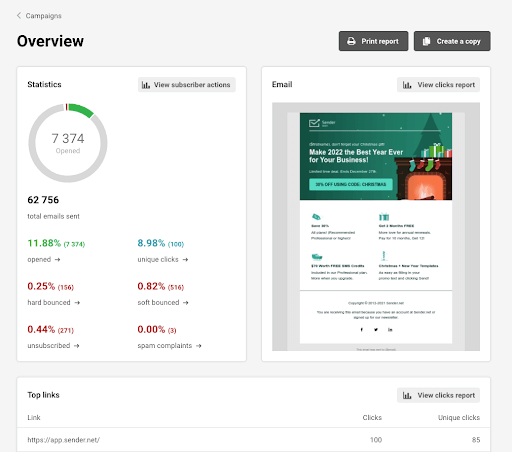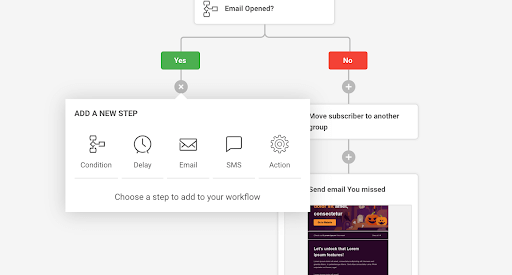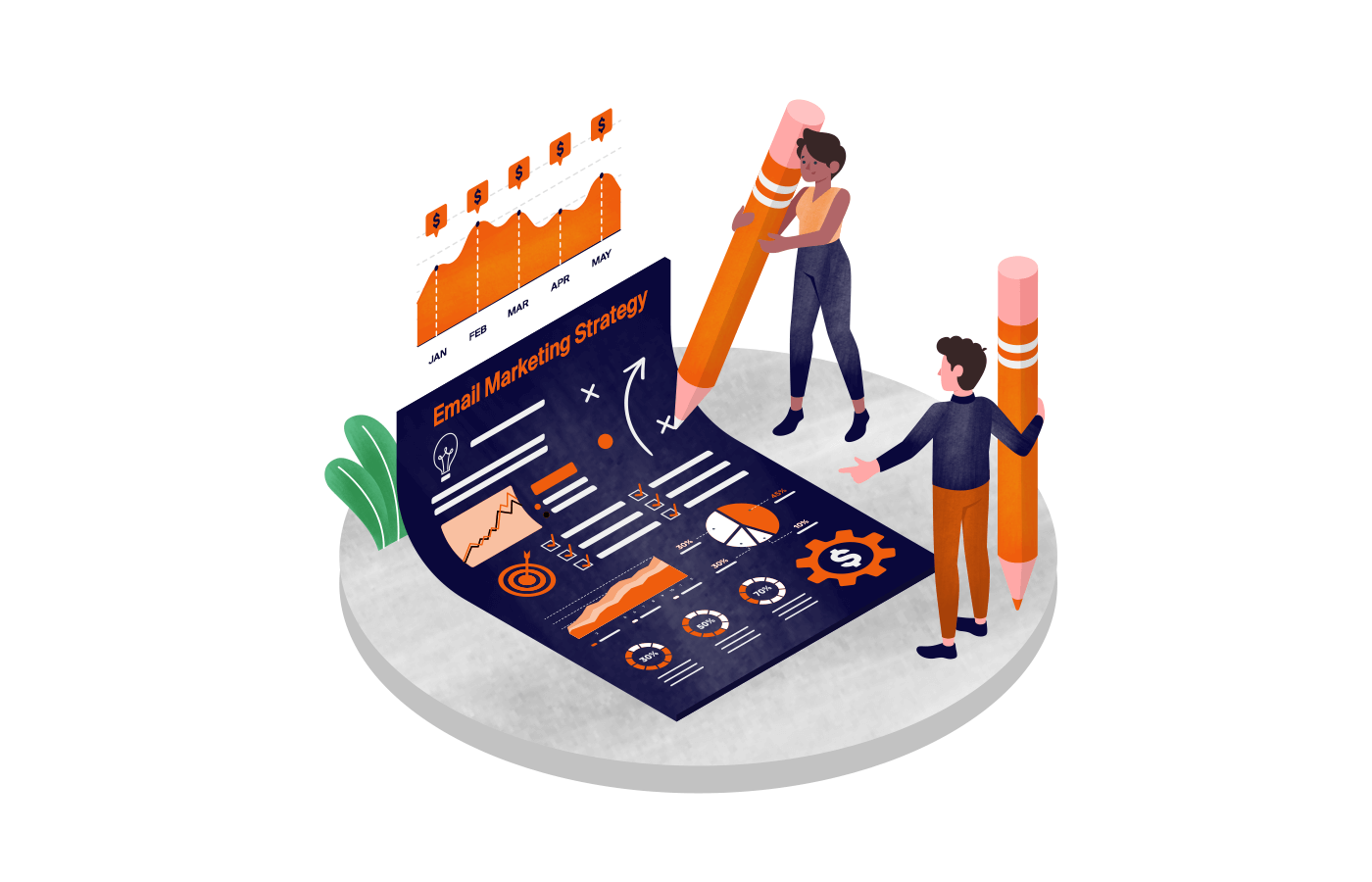Executing an email marketing campaign is easy.
Getting it to run profitably, unfortunately, is not. So here’s your one-stop guide to understanding email marketing strategy and designing an effective one to bump the engagement and sales in your email campaigns!
What is an Email Marketing Strategy?
There’s no precise definition but let’s take the broad road and describe this concept for you in this article as simple as we can.
An email marketing strategy is a plan of action that provides direction and purpose to your email marketing campaigns. Meaning it defines the macro as well as the micro-level aspects of your email marketing campaigns, including an overview of the below considerations:
- What is your overall objective from a particular campaign?
- How many email campaigns will you be needing?
- How should you be segmenting your subscribers? E.g., FREE vs. paid customers.
- Which segment of your subscribers will receive a specific sequence?
- How many parts will there be to your welcome sequence?
- When is the best time to be emailing your list?
- What should be your sending name for a given campaign?
And more!
Why Do You Even Need an Email Marketing Strategy?
Let’s look at what reports major McKinsey has to say about email marketing:
- Email is 40X more effective than Facebook and Twitter combined when it comes to customer acquisition.
- 91% of all US consumers still use email daily.
- Emails prompt purchases at least 3X more than social media, and the average order value is also relatively 17% higher.
However, it has to be said that your business is not even close to realizing any of these benefits without a sound marketing strategy.
A solid email marketing strategy helps you:
- Spell out clear goals and objectives that ultimately define success for a given campaign.
- Plan everything out ahead of time with an email marketing calendar, and always have clarity on “what next” throughout the course of your email campaigns.
- Automate your email campaigns based on timeline (drip emails) or user behavior (triggered emails) because now you know what you will be sending and when.
- Organize both nurturing and converting sequences of emails to ensure optimal customer buying journey.
- Get better ROI for the same efforts.
- Get multiplied engagement because you are now sending contextual emails.
- Increase sales because what you are now promoting to a particular segment of your audience has much relevance for them, leading to more conversions.
- Grow your email list with highly interested prospects who always want to hear from you.
- Measure ROI by constantly staying in touch with key parameters and reporting.
Overall, planning out email marketing strategies in advance helps marketers create effective email marketing campaigns. In addition, this makes it more likely to achieve your intended email marketing goals and objectives.
Also, a high-performing email marketing funnel takes a tremendous amount of pressure off your advertising campaigns and their limited budget.
Creating an Effective Email Marketing Strategy
Refer below proven guidelines and steps to get your email marketing on track.
Set Clear Goals
Before you even start thinking about writing out the first email of your first campaign, you must understand what difference this campaign is supposed to make.
More opens? More clicks? Engagement (replies) to help list cleanup? Once you are crystal clear about this, all other considerations can be considered.
Solidify Your List Building Strategy
Ideally, you would use an intelligent combination of statically placed subscription forms and dynamically positioned popups to get willing prospects to hand out their email addresses.
Your subscription form or popup should have a visually attractive design, a clear and benefit-driven CTA (call to action), and overall a great value proposition.
However, steer away from making empty promises or false values because this is a moment of truth for your subscriber who chose to entrust you with entry inside their personal inbox.
Segment Your Target Audience
Segmenting is the simple practice of grouping your extensive email list into smaller mini-lists called segments, usually based on common characteristics.
This classification could be demographic (age, gender, location, etc.), psychographics (interests, values, beliefs, lifestyles, etc.), geographic (country, state, etc.), or behavioral (past shopping patterns, click behavior, actions taken on a website).
The whole point of segmentation is to ensure that you only send highly relevant emails to a few segments, therefore ensuring higher engagement and action.
For example, sending a campaign offering 50% OFF on women’s t-shirts will not get you many sales from men.
It would be a vastly better-performing campaign if you chose to email just the female gender prospects (assuming you have asked them this data in your form in the first place) with the copy completely customized to this scenario.
Not sure of how to start segmenting your audience? Research both your audience and your product benefits deeper to get there.
Also read: Behavioral Segmentation Definition & Examples
Design Sending Schedule (Day & Time of day)
Although there is no universally accepted rule on when to send an email marketing campaign, there are some good suggestions.
Avoid weekends, early mornings, late nights, and public holidays when sending B2B emails (i.e., another business or organization). Generally, the idea is to avoid sending whenever they are not expected to check their office email.
B2C communication seems to be most effective mid-week — Tuesday, Wednesday, and Thursday. The best times for maximum open rates are between 9 am and 11 am.
Your niche audience may respond best at a very different time from this. For example, as an EMCEE, you might do best on Friday evenings and Saturday mornings when people are busy making weekend plans.
If you are unsure, it’s best to test out different sending times, give yourself multiple options and settle in on one when your audience seems to show maximum engagement.
Also read: Best Time to Send Emails By Type
Optimize Your Emails
Optimizing your emails can yield game-changing results. Play around the following parameters:
Identifying What You Want to Send and When
Ensure that your copy is easy to understand and aligns with what your email subscribers hope to read from you. Also, more often than not, your emails will be part of an automated sequence (described further ahead).
Subject Lines
35% of recipients open emails based solely on the subject line. (Convince and Convert)
Keep your subject line short, and avoid spammy words such as “Offer”, “FREE”, “Discount,” or “Money”. Using spammy words in the subject line can get your email delivered into your recipient’s Promotions tab or Spam folder.
Test it out with an emoji as well. These usually give a higher open rate.
Personalization
Companies that use advanced email personalization see returns of $20 per $1 spent – LiveTicker.

Personalization is a proven technique with amazing results that should be used in every email of yours, with relevancy.
For example, use a first name tag code (this is {$firstname} in case of Sender) in your email subject line and email body. Email service providers automatically replace this tag with data from the recipient’s personal information already in the database.
You can execute any personalization depending upon the information collected during signup using the subscription forms or popups.
CTA (Call to Action)
Include clear and contextual calls to action inside the email body. For example, a great practice is to mention the CTA at least twice.
Mobile-friendly Design
75% of Gmail users use their mobile devices to access their email – Backlinko.
If using an HTML template, ensure it’s a highly responsive one, i.e., it displays well on mobile and desktop devices. Maintain shorter subject lines and try and use single-column templates. Use a large font size (14px ideally) and avoid Menu bars if most of your readers use their phones.
Harness the Power of Email Automation
You could decide to send out a standard newsletter, triggered email (user behavior triggers), or a drip sequence (works per a predecided timeline). Email automation helps you scale your email game without compromising on the personalization or relevancy aspects.
An example of a triggered email is a cart abandonment email sent to clients who added items to their shopping cart but didn’t make a purchase.
An example of a drip sequence is a 7-part welcome email sequence sent to a user who has just joined your mailing list.
Another example of email automation is a win-back campaign for customer retention. Here you send out an email to inactive subscribers or customers, giving them a great offer persuading them to start transacting with you (more relevant in the ecommerce game).
Become a Huge Fan of Split Testing Your Emails
No one really knows what could end up working best for you right now. So go ahead and test everything out—subject line, copy or content, sending times, sender name, plain text vs. HTML emails, frequency of email sending, and more.
For example, your “From Name” or “Sender Name” could significantly impact opens. It seems many of your emails are initially opened by the subject line, but as your subscribers get used to reading and liking your emails more, they would tend to look towards the sender name first.
See what works for you.
Also, the jury is still out when it comes to plain text vs. HTML emails. Choose what works for your business best. HTML emails convert better but run more of a risk of being marked spam.
Plain text emails have higher open rates and ‘appear’ more personalized to subscribers. So take your pick. Not sure? Run it by the A/B testing furnace!
Finally, another important problem that email marketers run into is the length of their emails. Should you go with long emails or shorter ones? There is no definitive answer for this. But here’s the thing: if your subscribers are loyal and absolutely love your emails, no email is too long.
On the other hand, if you can keep it interesting and relevant, your readers will lap up each word of your 1,500-word composition! So again, see what works out for your niche by seeing what type of email they engage with most.
Email Marketing Performance Management
It’s crucial to track key KPIs (Key Performance Indicators) such as Open rate, Click through rate, Email bounces, and Unsubscribe rate. These never lie. So regardless of how emotional you feel about the latest campaign that you have so painstakingly compiled, if it’s not performing, let go of your horses and make those changes.
Here’s a sample screengrab to show you how we do it inside Sender:

Choosing the Right Email Marketing Tool
Doing all of the above becomes extremely difficult without the right tool. Most email marketers and business owners prefer an email tool that is:
- Easy to set up & use daily—an intuitive, user-friendly interface is necessary.
- Capable of supporting both basic and complex automation requirements.
- Pocket-friendly—no one wants to buy a tool that will cost them an arm and a leg every month.
As Capterra’s Top Rated Email & Marketing Automation tool of 2021, Sender doesn’t just stop with doing this much! It also boasts of SMS messaging support so you can manage both emails and SMS all within a single, unified dashboard.
Eager to see if it lives up to the promise? Take it for a free run (we really mean it) using the FREE Forever account that allows you to send up to 15,000 emails every month to up to 2,500 subscribers.

Step Up Your Email Marketing Strategy
Whether your organization practices an outbound or inbound approach, email (synonym for EDM or electronic direct mail) remains a high ROI digital channel to attract, engage and convert prospects.
And there’s no debate on the effectiveness of email marketing. It works, and everyone’s happy about this. But you really need to ask yourself whether you are achieving a high ROI for your business even from your most successful email marketing campaign.
If not, and even if you are, auditing your email marketing strategy would be the first step to take.
Also, a successful email marketing strategy is more than just mere tactics, email marketing tips, and tricks. It’s more of a process, a living ecosystem, if you will, that breathes feedback every time you send out an email.
Getting your email marketing campaigns back into profitability is easy, keep doing enough and look at your numbers to see where you are headed.
Also read: What is Data-Driven Marketing? Benefits & Examples
Content Contributor – Santosh Balakrishnan
